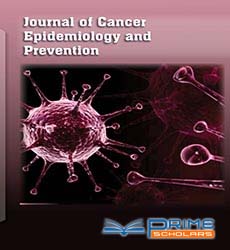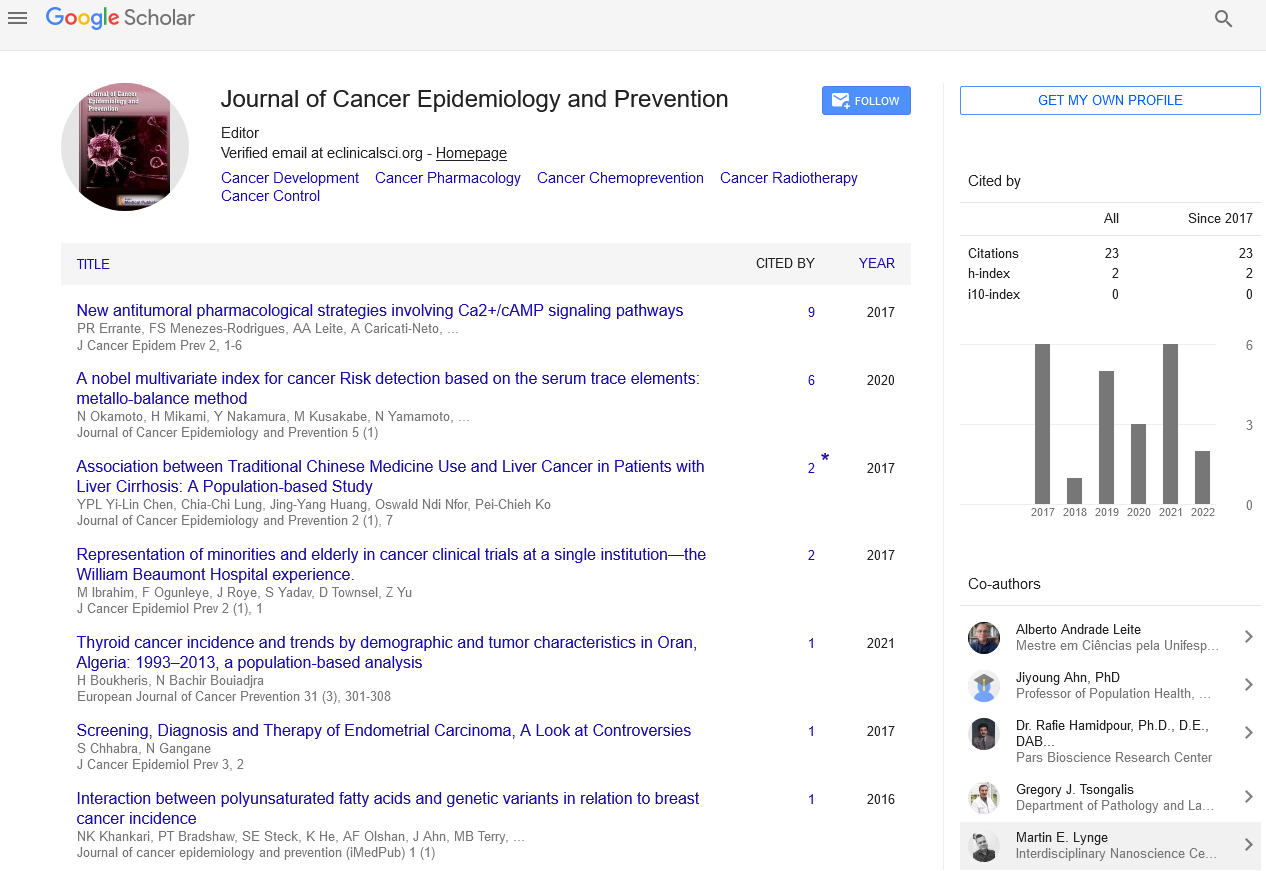Perspective - (2023) Volume 8, Issue 1
A Brief Note Regarding the Fight against Cancer: A New Step toward Greater Equity and Comprehensiveness
Parisa Mirzai*
Department of Radio Oncology, University of Paris, France
*Correspondence:
Parisa Mirzai,
Department of Radio Oncology, University of Paris,
France,
Email:
Received: 31-Jan-2023, Manuscript No. IPJCEP-23-15869;
Editor assigned: 02-Feb-2023, Pre QC No. IPJCEP-23-15869 (PQ);
Reviewed: 16-Feb-2023, QC No. IPJCEP-23-15869;
Revised: 21-Feb-2023, Manuscript No. IPJCEP-23-15869 (R);
Published:
28-Feb-2023, DOI: 10.36648/IPJCEP.23.08.003
Introduction
Since Galen, a Roman physician discovered that an unhealthy
diet was linked to an increased risk of cancer, the disease has
been considered preventable. Ramazzini, a physician from Italy,
proposed in 1713 that nuns who drank less had lower rates
of cervical cancer. In the 18th century, more research was done,
and it was found that certain chemicals like tobacco smoke,
tar, and soot could cause cancer in humans. Even though Potts
advised chimney sweeps to take preventative measures, only
Holland followed through, reducing the number of chimney
sweeps who developed scrotal cancer.
Description
Chemical carcinogens were first classified in the 19th century;
Classification came later. Physical and biological carcinogens
like X-ray radiation and the Rous sarcoma virus, which was discovered
in 1911, were identified at the beginning of the 20th century. There was a lack of formal prevention research, and
lifestyle changes for cancer prevention were not possible at the
time, despite the observed correlation between environmental
or chemical factors and cancer development. In 1987, the
European Commission established the European Code against
Cancer in Europe to educate the general public about ways to
lower their risk of developing cancer. The 10 recommendations
in the initial version of the Code included participation in organized
breast and cervical cancer screening programs, exposure
to known carcinogens, diet, weight, sun exposure, and tobacco
use. The European School of Oncology was in charge of reviewing
the Code at the beginning of the 1990s and adding information
about the scientific evidence supporting each recommendation.
The International Agency for Research on Cancer was in
charge of overseeing any subsequent updates. Participation in
organized colorectal cancer screening programs, breast feeding, hormone replacement therapy, and hepatitis B and papillomavirus
vaccination programs are all included in the fourth
edition of the Code, which was published in 2012-2013. The
member organizations of the non-governmental organization
UICC decide the organization’s direction at a general assembly
every 2 years. The 16 directors who make up the executive
committee of the UICC are chosen at general assemblies and
serve in between meetings. Prof. Anil D’Cruz, a native of India,
currently serves as President of UICC. The CEO is in charge of
the company, which has 40 employees and is based in Geneva,
Switzerland. The CEO at the moment is Dr. Cary Adams, who
has held this position since 2009. “Cancer immunotherapy” refers
to a variety of treatments that aim to activate the patient’s
own immune system in order to fight the tumor. Intravenous
BCG immunotherapy for superficial bladder cancer and the use
of interferons and other cytokines to elicit an immune response
in patients with renal cell carcinoma and melanoma are two recent
methods for eliciting an immune response against tumors.
For a number of tumors, particularly malignant melanoma and
renal cell carcinoma, intense research is being conducted on
cancer vaccines that elicit specific immune responses.
Conclusion
During Sipuleucel-T, an immunization-like procedure in the
late clinical stages of prostate cancer, patient dendritic cells
are stacked with prostatic corrosive phosphatase peptides to
elicit a specific resistant reaction against prostate-determined
cells. Due to the graft-versus-tumor effect, in which the donor’s
immune cells frequently attack the tumor, allogeneic hematopoietic
stem cell transplantation is a type of immunotherapy.
Thus, allogeneic HSCT has a higher fix rate than autologous
transplantation for various disease types regardless of making
more extreme side impacts.
Acknowledgement
None.
Conflict Of Interest
The authors declare that they have no conflict of interest.
Citation: Mirzai P (2023) A Brief Note Regarding the Fight against Cancer: A New Step towards Greater Equity and Comprehensiveness. J Cancer Epidemiol Prev. 08:003.
Copyright: © 2023 Mirzai P. This is an open-access article distributed under the terms of the Creative Commons Attribution License, which permits unrestricted use, distribution, and reproduction in any medium, provided the original author and source are credited.

